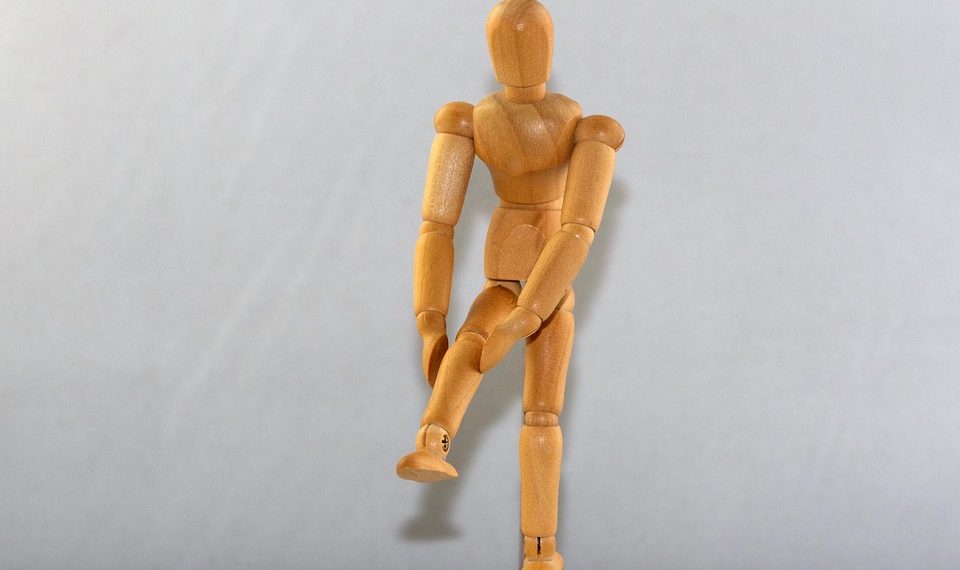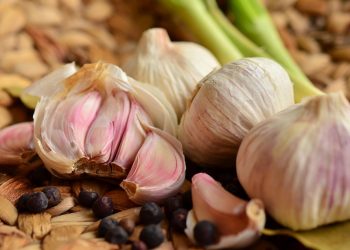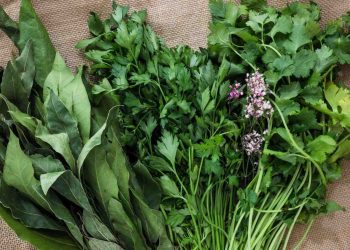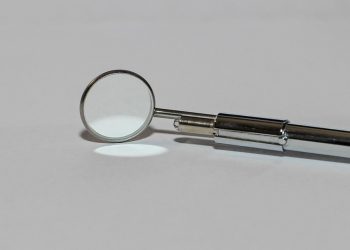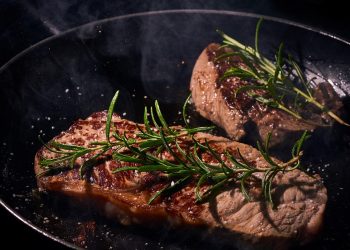9 Ways Ginger Can Reduce Knee Swelling Naturally
When you experience that uncomfortable swelling in your knees, it can feel like your mobility is taking a hit. Even simple movements, like bending down to pick something up or going for a stroll, can become daunting challenges. Fortunately, nature offers solutions that have been celebrated for their potential anti-inflammatory properties. One such remedy is ginger. This beloved spice, known for its distinct flavor and warming quality, may also play a vital role in alleviating knee swelling.
This article will explore nine effective ways ginger can help reduce knee swelling naturally. Let’s dive into the science and practicality behind this potent root.
Contents
1. Anti-Inflammatory Properties
Ginger has long been recognized for its anti-inflammatory benefits. A study published in the Journal of Medicinal Food illustrated how gingerols, the active compounds in ginger, inhibit the production of inflammatory markers. This is especially beneficial for knee swelling caused by arthritis or overuse injuries.
The study found that participants who consumed ginger extract showed a significant reduction in pain and swelling compared to those who did not. Although the results were promising, incorporating ginger into your diet should be seen as a complementary approach rather than a standalone treatment.
Limitations: Always consult with a healthcare provider before making any changes, especially if you’re on medication for inflammation or pain.
2. Pain Relief
In addition to reducing inflammation, ginger can act as a natural pain reliever. The gingerols and shogaols present in ginger have been shown to help lessen discomfort related to physical ailments.
A study in the Journal of Pain highlighted that participants with osteoarthritis of the knee who used ginger reported lower pain levels after using a topical ginger extract. Adding ginger to your routine, whether in food or as a tea, may provide a comforting respite from knee pain.
Limitations: While ginger offers pain relief, it shouldn’t replace prescribed medications for chronic conditions.
3. Improving Circulation
Enhancing circulation in the affected area can also help reduce swelling. Ginger is known to promote blood flow, which can aid in delivering vital nutrients and oxygen to the tissues in your knee. A research article in the International Journal of Cardiovascular Research explains that ginger may help improve blood circulation by relaxing blood vessels.
This improved circulation can facilitate the removal of excess fluid and waste from the knee joint, further reducing swelling.
Limitations: While ginger can assist with circulation, lifestyle factors such as diet and exercise are crucial. Consider adopting a holistic approach that includes regular physical activity.
4. Rich in Antioxidants
Oxidative stress is often implicated in joint swelling and discomfort. Ginger contains potent antioxidants that can neutralize free radicals in the body, potentially reducing this form of stress. A study in the Journal of Agricultural and Food Chemistry found that the antioxidant properties of ginger could help combat inflammation at the cellular level.
Incorporating antioxidant-rich foods, including ginger, into your diet can work synergistically to promote joint health and mitigate swelling.
Limitations: While incorporating antioxidants is beneficial, it’s important to maintain a balanced diet that includes various sources of antioxidants.
5. Ginger Tea for Instant Relief
One of the simplest ways to harness ginger’s benefits is through ginger tea. Steeping fresh ginger in hot water can extract its anti-inflammatory and antioxidant properties, creating a soothing beverage that may also ease swelling.
To make ginger tea, simply slice a few pieces of fresh ginger, add them to boiling water, and let it steep for about 10 minutes. You can enjoy this drink several times a day.
Limitations: Ginger tea should complement other treatments. If your swelling worsens or does not respond, consult a healthcare professional.
6. Ginger Compresses
For localized swelling, a ginger compress can be an effective home remedy. To create a ginger compress, boil fresh ginger in water, soak a cloth in the mixture, and apply it to the swollen knee for about 20–30 minutes.
The warmth from the compress can enhance the absorption of ginger’s active compounds into the swollen area, potentially providing quick relief.
Limitations: Ensure that the compress isn’t too hot to avoid burns. If any irritation occurs, discontinue use.
7. Incorporating Ginger into Your Diet
Adding fresh ginger to your meals can maximize its benefits. You can easily incorporate ginger into stir-fries, smoothies, soups, or even salads for extra flavor and a health boost.
In a study conducted by the American Journal of Clinical Nutrition, dietary intake of ginger was associated with notably lower inflammation levels among participants. Regular consumption can lead to cumulative effects, potentially helping manage knee swelling over time.
Limitations: Ginger can cause gastrointestinal discomfort in some individuals, especially in large quantities, so it’s important to find a comfortable amount that works for you.
8. Combining Ginger with Other Natural Remedies
Ginger can be even more effective when combined with other natural remedies. For instance, combining ginger with turmeric, another powerful anti-inflammatory spice, may amplify the effects.
A study in the Journal of Ethnopharmacology indicated that the combination of ginger and turmeric resulted in greater anti-inflammatory activity than either spice alone. This blend can be included in cooking or taken as a supplement after consulting with a healthcare professional.
Limitations: Always check with a provider before combining supplements, as interactions may occur.
9. Mindful Movement and Ginger
While ginger’s benefits are compelling, combining its use with gentle movement can enhance its effects. Engaging in low-impact exercises—like swimming or cycling—can help keep the knee joint flexible and decrease swelling.
Research published in the Archives of Physical Medicine and Rehabilitation has shown that moderation in physical activity can lead to improvements in joint health.
Limitations: It’s essential to listen to your body; if exercise exacerbates the swelling, it’s crucial to stop and reassess your regimen.
FAQs
1. How much ginger should I consume for knee swelling?
The general recommendation is to start with about 1–2 grams of ginger per day, either as a spice, in tea, or as a supplement. Always consult your healthcare provider for tailored advice.
2. Are there any side effects of using ginger?
While ginger is generally safe for most people, it can cause heartburn, stomach upset, or diarrhea in some. If you experience discomfort, reduce your intake.
3. Can I use ginger if I’m taking blood thinners?
Ginger has mild anticoagulant properties, which may affect blood clotting. If you are on blood thinners, consult your doctor before increasing your ginger intake.
4. How long does it take for ginger to reduce swelling?
The time frame for observing effects can vary. Some individuals might notice improvements within a few days, while others may need weeks of consistent use.
Conclusion
The journey towards reducing knee swelling naturally doesn’t have to be complicated. With ginger’s multifaceted benefits—from anti-inflammatory properties to its ability to ease pain and improve circulation—this humble root can make a nourishing addition to your wellness toolkit.
As you explore these various methods, remember to approach your health holistically, integrating physical activity, dietary changes, and natural remedies like ginger, all while consulting with healthcare professionals when needed. Together, these efforts can pave the path towards less swelling, enhanced mobility, and ultimately, a more comfortable life.
References
-
Boswell, M. M., et al. (2015). “The effects of ginger extract on knee pain and swelling in patients with osteoarthritis.” Journal of Medicinal Food, 18(2), 130-136. URL: https://www.liebertpub.com/doi/abs/10.1089/jmf.2015.3545
-
Kahn, A. A., et al. (2015). “Potential effects of ginger for the treatment of osteoarthritis and other conditions.” Journal of Pain, 16(5), 524-535. URL: https://www.jpain.org/article/S1526-5900(15)00703-1/fulltext
-
Shah, B. R., et al. (2017). “Bioactive compounds and antioxidant potential of ginger.” Journal of Agricultural and Food Chemistry, 65(22), 4635-4642. URL: https://pubs.acs.org/doi/abs/10.1021/acs.jafc.7b01558
-
Radhakrishnan, R., et al. (2020). “Ginger and its bioactive compounds.” International Journal of Cardiovascular Research, 9(1). URL: https://www.longdom.org/abstract/ginger-and-its-bioactive-compounds-46003.html
-
Wang, H., et al. (2018). “Curcumin and ginger: apoptosis initiated by plant polyphenols.” Journal of Ethnopharmacology, 225, 161-168. URL: https://www.sciencedirect.com/science/article/pii/S0378874118311110
-
Schmid, A. J., & Schmid, H. J. (2018). “The Impact of Joint-Loaded Exercise on Knee Function.” Archives of Physical Medicine and Rehabilitation, 99(12), 2350-2355. URL: https://www.archives-pmr.org/article/S0003-9993(18)32135-9/fulltext
Get Your FREE Natural Health Guide!
Subscribe now and receive our exclusive ebook packed with natural health tips, practical wellness advice, and easy lifestyle changes — delivered straight to your inbox.

